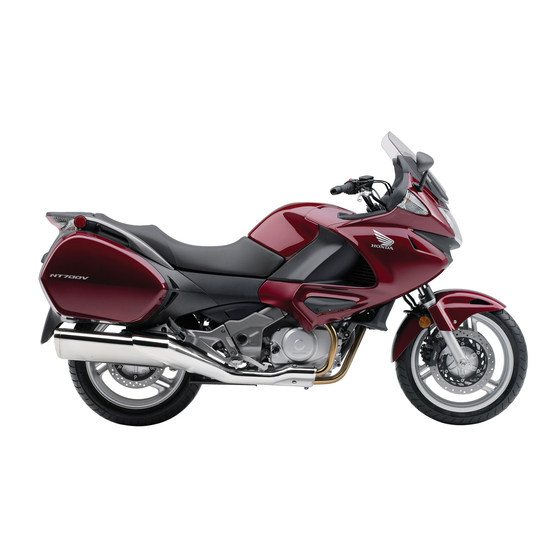
Table of Contents
Advertisement
Quick Links
Contents
These pages give an overview of the
contents of your owner's manual. The first
page of each section lists the topics
covered in that section.
Motorcycle Safety
..............................
Important safety information you
should know, plus a look at the safety-
related labels on your motorcycle.
Instruments & Controls
The location and function of indicators
and controls on your motorcycle and
operating instructions for various
controls and features.
Contents
.
1
....................
.
9
Before Riding
.....................................
The importance of wearing a helmet
and other protective gear, how to make
sure you and your motorcycle are ready
to ride, and important information about
loading.
Basic Operation & Riding
How to start and stop the engine, shift
gears, and brake. Also, riding
precautions and important information
about riding with a passenger or cargo.
.
35
................
.
53
Advertisement
Chapters
Table of Contents











Need help?
Do you have a question about the 2010 NT700V and is the answer not in the manual?
Questions and answers
I replaced the battery and now the main fuse keeps blowing. I **** seeing only 4 ohms positive cable to ground and A (left) terminal of the solenoid to ground. How does changing the battery out cause a short?
The provided context does not contain information explaining why replacing the battery on a Honda NT700V causes the main fuse to blow.
This answer is automatically generated